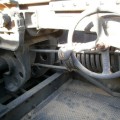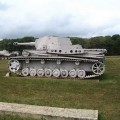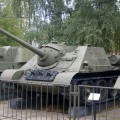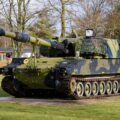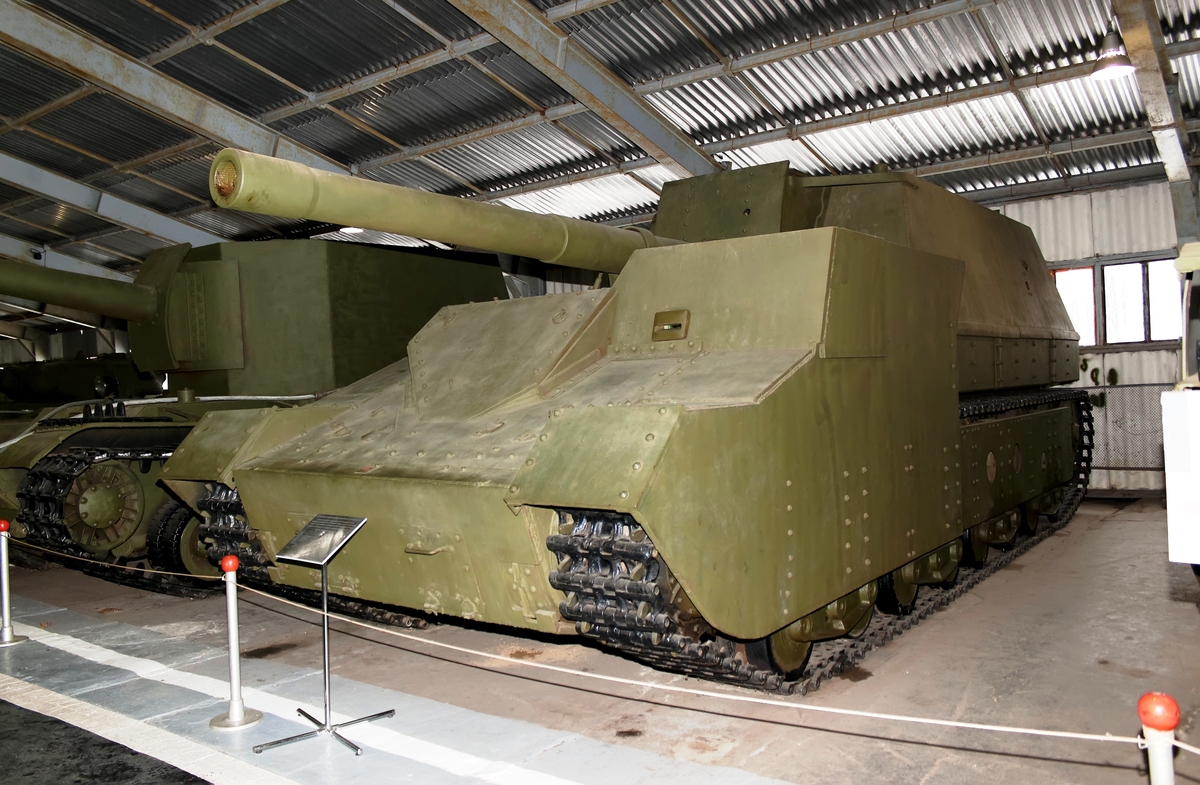
SU-14 | |
|---|---|
| Riik | Nõukogude Liit |
| Rolli | Iseliikuv relv |
| Ehitatud | 2 prototüüpi |
2007 SU-14 oli prototüüp Nõukogude raske iseliikuv relv, mis ehitati T-35 šassiile. Algne prototüüp paigaldas 152 mm püstoli M1935 (Br-2); 1936. aasta SU-14-1 variant kandis 203 mm püstolit B-4, mis võis tulistada 48,9 kilogrammi kestasid kuni 25 km kaugusel. Selle turvis oli 20–50 mm paks. See ei sisenenud kunagi seeriatootmisse.
Allikas: SU-14 Vikipeedias
| SU-14-2 Walk Around | |
|---|---|
| Fotograafid | Teadmata |
| Lokaliseerimine | Teadmata |
| Fotod | 12 |
Seotud komplektid:
Leia komplektid eBayst:
Vaata ka:
The SU-14 was a Soviet prototype self-propelled gun developed in the late 1930s. It was based on the T-35 heavy tank chassis and armed with a 203 mm howitzer. The SU-14 was intended to provide heavy artillery support for the Red Army, especially in breaking through enemy fortifications. However, only two prototypes were built before the outbreak of World War II, and they never saw combat.
The SU-14 project began in 1936 as an attempt to create a mobile artillery platform that could fire shells with a high explosive mass and a long range. The design team chose the T-35 chassis as the basis for the vehicle, as it had enough space and weight capacity to mount a large gun and its ammunition. The gun selected was the B-4 203 mm howitzer, which had a maximum range of 18 km and could fire shells weighing up to 100 kg. The gun was mounted in a fixed casemate at the rear of the hull, with a limited traverse of 8 degrees left and right. The crew consisted of seven men: the driver, the commander, the gunner, and four loaders.
The first prototype of the SU-14 was completed in 1937 and underwent trials at Kubinka proving ground. It proved to have good mobility and cross-country performance for its size and weight, but also suffered from some mechanical problems and low reliability. The second prototype was built in 1938 with some improvements, such as a new engine and transmission, enhanced armor protection, and an auxiliary machine gun for defense against infantry. Both prototypes participated in the Soviet-Finnish War of 1939-1940 as part of an experimental artillery unit, but they did not engage in any combat actions.
The SU-14 project was canceled in 1941 due to the German invasion of the Soviet Union and the urgent need for more conventional tanks and guns. The two prototypes were abandoned at Kubinka after being damaged by German air raids. They were later scrapped after the war.
Views : 137



